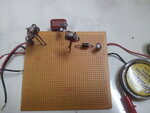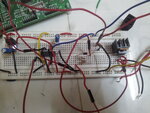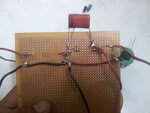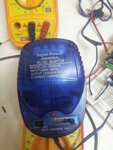victordion
Newbie level 6
I know that when using a PV cell you need to do MPPT, but I have questions on how it is realized in detail.
Suppose we have the following configuration, the DC-DC outputs a regulated voltage.
PV cell -----> DC-DC------> Load
My question is if you do Perturb and Observe, you need to control the output voltage of the PV cell. But how it is achieved? Is it by changing the input resistance of the DC-DC? But I don't see such feasibility in any DC-DC I know so far.
Or is it realized by changing the DC-DC regulator's output voltage? In this situation the load's dissipated power will change, and then we can find a new point on PV cell's IV curve that satisfies this power demand. However, I think a DC-DC outputting regulated voltage has its output voltage programmed by external resistors, and once the circuit is built the output voltage cannot be changed on the fly.
In short, my question is what is the control knob on DC-DC when doing MPPT?
Suppose we have the following configuration, the DC-DC outputs a regulated voltage.
PV cell -----> DC-DC------> Load
My question is if you do Perturb and Observe, you need to control the output voltage of the PV cell. But how it is achieved? Is it by changing the input resistance of the DC-DC? But I don't see such feasibility in any DC-DC I know so far.
Or is it realized by changing the DC-DC regulator's output voltage? In this situation the load's dissipated power will change, and then we can find a new point on PV cell's IV curve that satisfies this power demand. However, I think a DC-DC outputting regulated voltage has its output voltage programmed by external resistors, and once the circuit is built the output voltage cannot be changed on the fly.
In short, my question is what is the control knob on DC-DC when doing MPPT?






